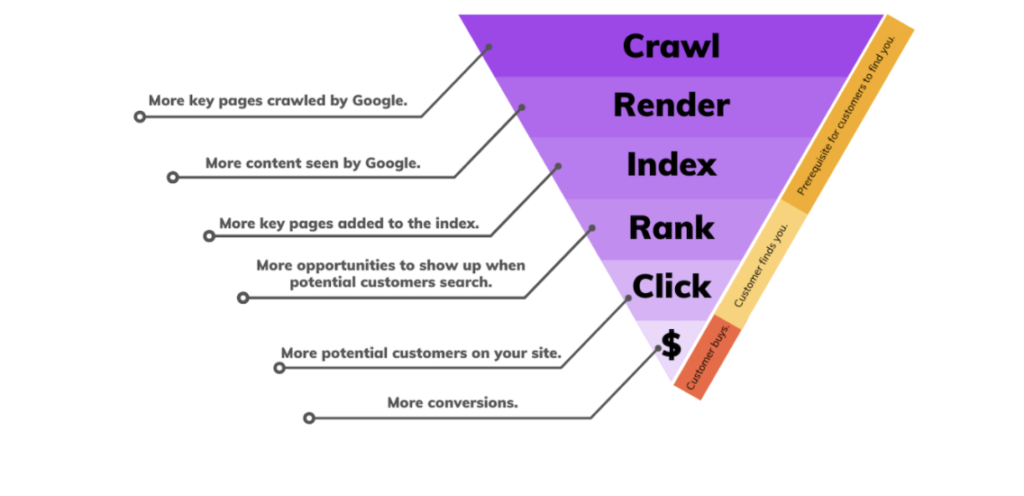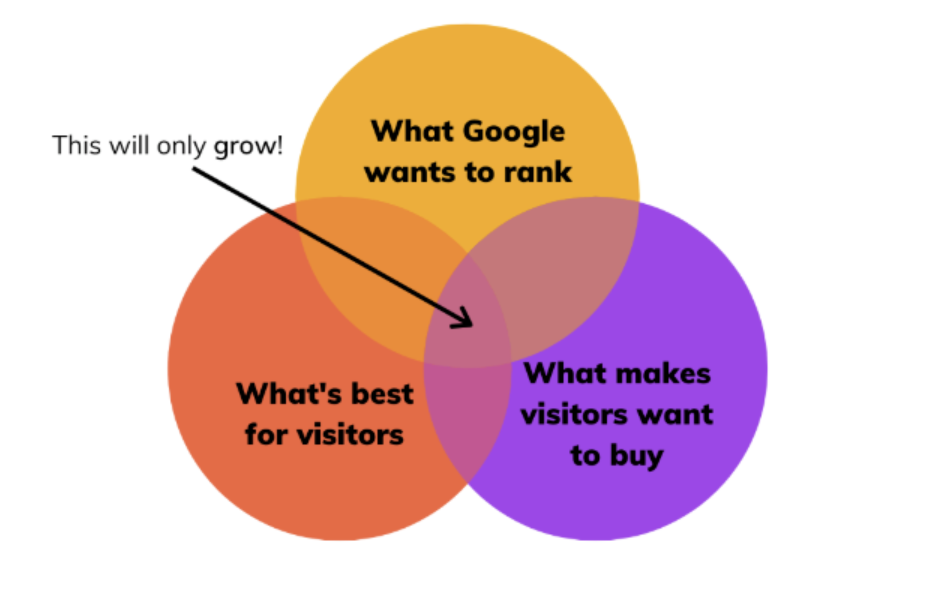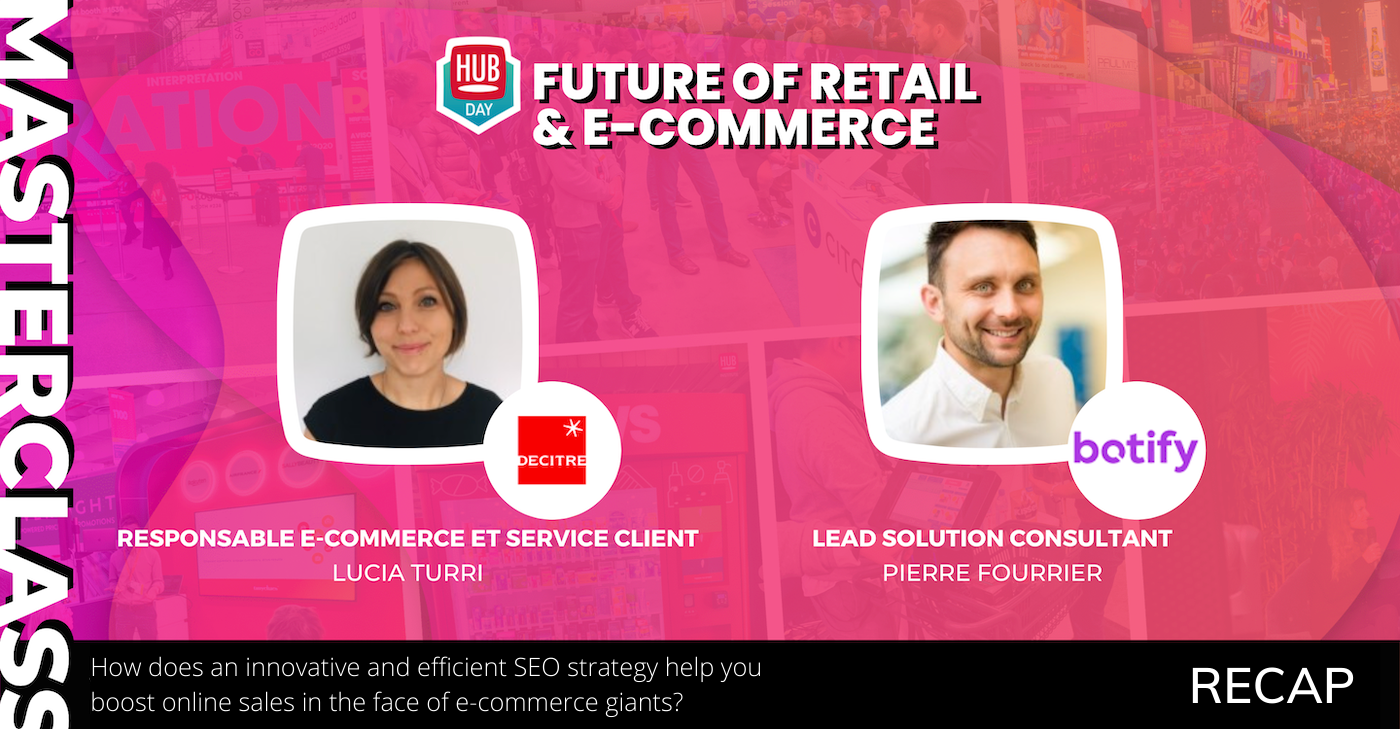The Cascading Benefits of SEO: How SEO Impacts the ROI of Every Marketing Effort
We’ve talked about how SEO impacts long-term revenue, but what about its effects on your other marketing efforts – from your user experience to paid search? SEO is the DNA of the web, and it can inform and improve nearly every other marketing effort.
Let’s start at the beginning.
1. UX: SEO can improve the user experience for humans and bots
Google and other search engines want to reward websites that provide an exceptional experience to visitors – through load times, mobile-friendliness, readability, and more! That’s why it’s important for the development team and SEO team to be on the same page. While most SEO professionals aren’t web designers or developers, the two roles should work closely together.
Jessica Bowman, author of The Executive SEO Playbook and editor-at-large for Search Engine Journal sums it up nicely:
“SEO is both a horizontal and vertical function. Too many executives and people throughout the organization see SEO as vertical and so everyone considers it ‘the SEO team’s job.’ In reality, SEO needs to span across most roles and most technologies. SEO teams can lead the strategy and serve as a center of excellence, but they cannot actually do most SEO tasks. It’s everyone else working on the website that controls the levers.”
When it comes to optimizing your website, the user experience (UX) should be your top priority, but not all web developers realize that you have two groups of visitors to optimize for — humans and search engine bots.
Here are a few ways SEO should inform and support your UX.
Load time optimization for a speedy experience
Load times play a huge factor in Google’s ability to crawl your site, a visitor’s satisfaction with your brand, and their likelihood of converting (whether that means making a purchase (e-commerce), filling out a form (lead generation), or reading and subscribing (publisher).
From Google’s perspective, the load time of a page is the amount of time it takes for search engine bots to download the page’s HTML code. Since Google has a crawl budget – meaning it can only crawl a limited number of pages – a slower load time can mean less time for Google to crawl other pages on your site.
To optimize Google’s crawl, average load time should remain below 500ms for strategic pages. While a developer will typically prioritize load time, it’s helpful for them to sync up with SEOs to prioritize optimizing load times for critical pages on the site, and to make sure that slow loading times on certain pages don’t produce crawl waste.
Ensuring readability for your site across devices
SEOs know that search engines might miss client-side rendered content because of render budgets. If search engines can’t find this content, searchers won’t be able to either, making it all the more important for SEOs to work with their development teams to optimize their JavaScript for SEO. It’s all about weighing the UX benefits against the SEO risks, and vice versa.
Optimizing JavaScript for multi-device functionality is key to making sure visitors can access your content. For one, if you’re not using pixel-perfect rendering, it can be difficult to ensure that Google and other bots will be able to access content on your site. If Google is missing your critical content, it won’t end up in the index and won’t be found by searchers (at least organically).
How does the mobile-first index come into play?
For many businesses, more than half of their web traffic comes from people on mobile devices. That’s why, in 2018, Google started switching sites over to mobile-first indexing (MFI).
That switch meant that Google would start judging a page’s ranking/position in search results based on how that page appeared on mobile, which meant it was critical for sites to ensure that the same content that showed up on the desktop version of their pages also showed up on its mobile version — a complicated task when you realize how many devices visitors can view your website on, whether it be a Google Pixel, iPad, Microsoft Surface, or otherwise — plus the many versions of each!


The SEO funnel as it relates to customer experience
While some tools can emulate what a visitor is seeing when they search on mobile, they’re often not able to show you the pixel-perfect rendering of any device (we can help with that!). For instance, you might see 20 products on your mobile screen, but Google or a visitor on another device might only see 5. This is why it’s critical for SEOs to work closely with web developers to ensure that mobile visitors are getting the same experience as desktop visitors — not only is this important for UX, but also for ranking in the age of the mobile-first index.
Side note: Sites that have switched over to MFI received a notice from Google Search Console that the change had happened to their site, which webmasters could validate by watching their log files to see if the primary crawler had switched to Googlebot smartphone. As of mid-2019, Botify’s data indicated that 37% of enterprise websites still had not switched over to MFI.
In addition to mobile-first indexing, mobile-friendliness is also a Google ranking factor. Google encourages all webmasters to use tools like their mobile friendly test and mobile documentation to ensure all sites offer an exceptional experience to mobile visitors, something their algorithm will also reward — win, win!
Google means well!
Many of Google’s guidelines are enforced to ensure the best experience for human visitors – so if Google is encountering issues, it’s likely visitors are frustrated, too. It’s best to optimize your UX with both types of visitors in mind. After all, if people are finding your content and are happy with their experience, they’re more likely to convert!
While search engines want to reward pages that provide an amazing visitor experience, their bots aren’t humans and have limitations that web developers need to be aware of in order to avoid hurting the site’s performance in search (where countless potential visitors are looking for you!). For example, developers often favor JavaScript solutions to load content because it’s easier to work with than HTML (especially for large websites) and it can provide interactivity that can enhance the visitor experience. When you implement JavaScript, you’ll want to make sure it’s not hiding critical content that’s preventing Google from crawling your site or creating rendering issues (like lazy loading).
Optimizing internal linking to serve relevant content
Google crawls your website by following a roadmap of internal links – just as a visitor would follow links to reach relevant content.
Google will know if your internal links are pointing to pages that aren’t relevant to the page serving the link. Fixing the issue from an SEO standpoint will help you serve more relevant and credible content to your visitors.
Furthermore, if the internal links on your site are returning 404 status codes, or if you’re sending Google and visitors through pages that redirect, it may hurt your user experience and your SEO. When you’re able to clean up your site’s bad HTTP status codes before they start causing issues, it will not only have a positive impact on your site’s ability to rank and garner traffic but also your visitors’ satisfaction – ultimately impacting your conversions as well.


Here are a few ways your SEO team can optimize your internal linking:
- Clean up redirected URLs (only link to the ultimate destination)
- Avoid linking to the non-canonical version of a page
- Avoid linking to URLs returning a 404 status code
And a few more things about CRO!
As we’ve seen above, SEO doesn’t just attract more visitors to your site — it can also help your conversion optimization efforts.
Here’s how:
- Look at your query data to see the real ways people are searching for what you offer. Incorporate that phrasing into a messaging A/B test to see if it improves conversions.
- SEO data can help you identify your top organic landing pages so that you can prioritize conversion optimizations on those pages.
- Following search engine best practices can prevent your CRO tests from harming your site’s performance in search results.
- Creating content based on real searcher queries can drive more qualified traffic to your site that’s more likely to convert in the first place.
Read more about how SEO & CRO work hand in hand here!
2. Traffic acquisition: How SEO helps more people find you
After you’ve laid the foundation for your marketing with a solid website, it’s time to drive visitors to it! That’s where your acquisition channels come into play, and SEO not only drives one of the strongest acquisition channels (organic search), but it can also benefit your other acquisition channels as well.
Using SEO to benefit your paid strategy
SEO is often pitted against paid channels like PPC, but in reality, they can work synergistically to inform and benefit each other.
Let’s dive into PPC
While PPC often produces faster returns than organic (since the former is pay-to-play and the latter is earned over time), it’s a common myth that it drives more revenue than organic search, accomplished through SEO.
SEO is a long-term investment, and it’s been proven to be a top revenue generator when it’s prioritized. And unlike paid, its effects don’t “turn off” once you stop paying for it. That’s not to say that paid shouldn’t be prioritized. On the contrary, SEO and paid search can benefit one another when they strike the right balance.
In fact, there are a number of studies (like this one from Seer Interactive) that show the CTR on paid and organic results are higher when they both appear on page 1 of the SERPs (search engine results page) at the same time, as opposed to just a PPC result being shown or just an organic result.
What you know about your organic performance can inform where you spend your budget in paid – so that you can get smarter about your investments when you think about them together. For example, if you know you have pages that get low organic visibility, you can put paid budget there as those pages are optimized and start to earn more of that organic traffic.
Additionally, if you’re weaning yourself off some of your reliance on paid, you may be able to leverage SEO to rank for more keywords so you don’t have to pay as much for traffic.
Earned organic rankings through SEO can also have a halo effect, making people more likely to engage with you on other mediums like LinkedIn, Twitter, and other social media platforms.
And what about e-commerce activations?
Do you work for a brand that leverages product feeds to manage a robust catalog and multiple ecommerce activations? If you are powering product ads such as Google Shopping or Facebook Product ads, or if you’re promoting your products across marketplaces such as Amazon or Ebay, SEO can help you make a big impact by boosting performance across these channels.
Just as you can use your keyword insights to inform copy for your PPC, you can also use these insights to enrich your product feeds. If you’ve noticed that people are finding (and converting with) your products through specific keywords, perhaps you’ll want to use the power of those same keywords in your advertisements. Or maybe you’ve noticed that shoppers in the US are searching differently than shoppers in the UK for the same product. You can augment your feed ads with terms that create more relevance for your different audiences.
How SEO contributes to direct traffic
Similarly to how you can create a strong brand presence by pairing paid and organic – or organic with social media, getting your brand to rank for informational keywords can attract searchers who weren’t familiar with it previously. Introducing people to your brand via content that interests them often translates later to those same people typing your brand’s website into the browser to visit it directly.
For example, if a searcher types in “best sandals” and clicks on the e-commerce site “bestsandalexamplesite.com,” that person is now familiar with the brand and may visit the URL directly at some point in the future.
How SEO can inform your content marketing strategy
Content marketers face a big challenge — capturing a steady flow of traffic and increasing that traffic over time. One of the best ways to accomplish this is through SEO.
Organic keyword data, for example, can reveal how your audience is searching for what you offer. When you use this window into searcher intent to inform your content, you have the opportunity to rank and capture traffic long past the initial publish date.
Because keyword data is audience data, keyword analysis shouldn’t end with the SEO team. It can inspire a thoughtful conversation between the entire marketing team to evaluate and adjust relevant campaigns to match their searchers’ intent and drive more traffic.
In Botify, you can find your keywords data in the RealKeywords section of Botify Analytics.
Optimize across the board to power your ROI
The reality is, SEO impacts every aspect of your website – and every part of your site has an effect on your SEO.
Keeping all of your departments in sync to work towards a common goal will help you strike the right balance for driving each team’s objectives. Meanwhile, while SEO can benefit each of your marketing efforts, those same marketing efforts can also hinder your SEO. That’s why a two-way conversation is integral to the success of your site’s ROI.





